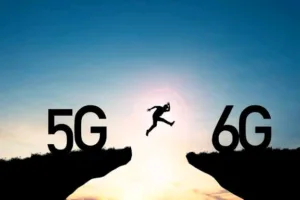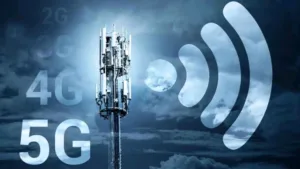When you purchase through links on our site, we may earn an affiliate commission. This doesn’t affect our editorial independence.
In the rapidly evolving telecommunications sector, 5G connectivity has emerged as a widely recognised term. It is celebrated as the upcoming significant advancement in wireless connectivity. As the sector shifts its focus to the forthcoming generation of connectivity, it begs the thorough analysis of 5G’s real-world efficacy.
A comprehensive year-long research project was carried out by a global research group from Northeastern University. The team aimed to clarify whether 5G connectivity is improving network service in different metropolitan areas. The results present a complex and sobering view of 5G’s capabilities.
The research encompasses a variety of urban settings by employing several methods of data gathering, including crowdsourced information. Its goal was to evaluate the actual performance of 5G networks in relation to their 4G predecessors. Interestingly, their results show that although 5G infrastructure is common in large cities, its performance does not consistently exceed that of 4G. Instead, the advantages of 5G frequently vary based on geographic and operational factors.
Imran Khan, a predoctoral researcher at Northeastern University and the study’s lead author, explains this gap, highlighting the significant regional and operator-specific differences in 5G performance.

Image credit: Digitechnology
Some networks demonstrated significant differences in terms of network improvement, whereas others offered minimal enhancements compared to current LTE services. This inconsistency indicates that elements influencing network performance are significantly more complex than implementing new technology. Operator-specific decisions regarding spectrum band distribution, network deployment intensity, and the utilisation of cloud and edge infrastructure are crucial in influencing the performance of 5G in practical environments.
Highlighting the Essence of the Findings
Claudio Fiandrino, a Research Assistant Professor at IMDEA Networks, emphasised the core of the results, noting that implementing 5G connectivity in city environments has occurred swiftly. Nonetheless, this technology hasn’t yet resulted in universally better performance metrics—particularly regarding latency—compared to 4G/LTE technology.
This discrepancy between marketing claims and actual results presents difficulties for consumers. Many might discover that transitioning to 5G connectivity doesn’t ensure improved network speed or reduced latency.
The research emphasises that numerous users’ encounters with 5G do not match the expected advantages claimed by the marketing campaign. In critical applications reliant on low latency, variations in performance across diverse networks and locations pose a significant issue. Researchers conclude that choices about using latency-sensitive services should be based on concrete measurements and analyses instead of just assumptions derived from generational tech advancements.
Check Out Previous Posts on this Site
MultiChoice Mulls 4K Launch on DStv and Showmax: Its Implications for Subscribers
Transitioning to 6G
Additionally, the research highlights warning signs about the hasty shift to 6G. It laid out the possible risks of directing funds into advanced technologies before thoroughly addressing current operational issues. Concerns such as coverage gaps, backhaul and edge location optimisation, and spectrum fragmentation might remain unresolved if resources are improperly distributed in the quest for new technologies. The researchers warn that these errors might result in unfulfilled public expectations and a decline in trust in the telecommunications sector.

Image credit: Forbes.com
Extensive, visionary measurement projects are crucial to guaranteeing that upcoming generations of wireless technology meet expectations. These initiatives should focus on transparency and reproducibility to evaluate user experiences effectively. The researchers promote a more thoughtful strategy for policy creation and investment plans concerning 6G. They emphasise the need for choices to be informed by real performance data instead of unfounded advertising rhetoric.
Even with the swift rollout of 5G in key urban areas, the results highlight that we are still in a stage where performance benefits are not uniform across various networks.
Although 5G coverage and deployment seem strong, the technology has not yet advanced to a stage where it consistently provides better user experiences than 4 G. Therefore, the advancement of telecommunications technology should not solely concentrate on deployment metrics. It should also guarantee that reliability and user experience are prioritised.
5G Connectivity Holds Great Promises Despite Challenges
5G offers tremendous potential despite obstacles. The findings of this research into the current status of 5G uncover a technological environment filled with potential and obstacles. Although the infrastructure is established, a pressing need remains to improve its practical use and user experience. The emergence of 6G, for instance, will depend on tackling these urgent issues and promoting an open discussion regarding technological potentials.

Image credit: techpolyp.com
As we move through this transitional phase in telecommunications, it is essential to promote public awareness of what these developments represent. 5G has certainly established a foundation for future advancements. However, the telecoms industry can only hope to achieve the complete potential of next-generation connectivity through continuous evaluations and enhancements.
Landing on this Discussion
Although 5G is implemented extensively in cities, its performance benefits over 4G are not assured. The differences noted in network performance highlight the significance of empirical data in informing operator choices and shaping user expectations. The telecommunications industry should properly manage the upcoming transition to 6G. It must draw insights from the experiences of 5G’s implementation to build a more dependable and user-focused technological future.







